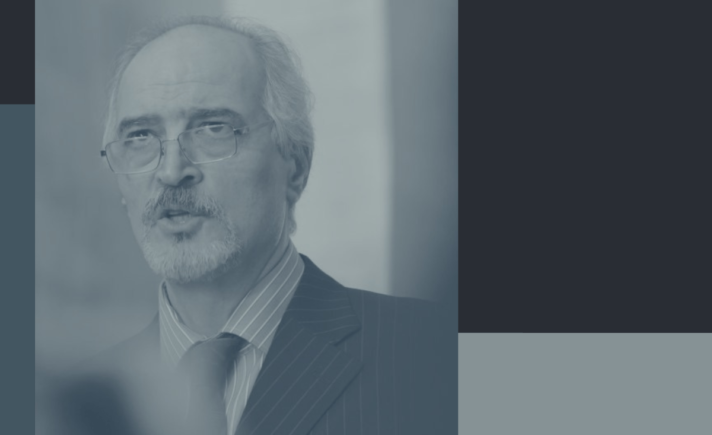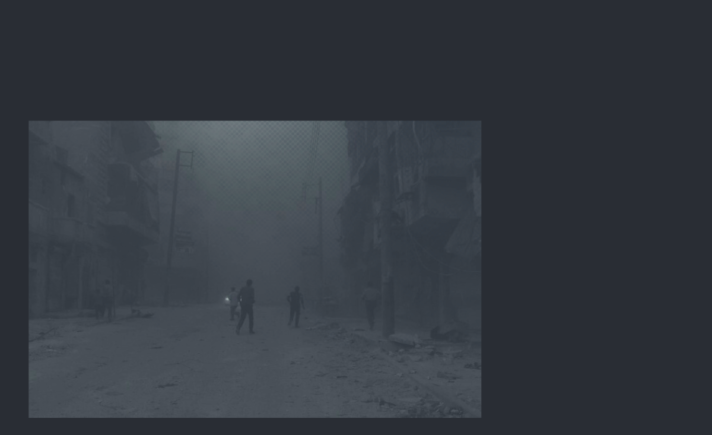In northwest Syria, a colleague of mine named Morhaf works as a doctor in a health facility supported by our organization, the Syrian American Medical Society (SAMS), which provides medical care in some of the most dangerous regions of the Syrian conflict. In my capacity as head of advocacy in Turkey, I recently asked Dr. Morhaf to conduct an interview with a large human rights NGO to talk about the ongoing attacks on health centers in his area by the Syrian regime and its Russian ally. His response was highly telling. “What did the hundreds of interviews we gave about Aleppo with human rights NGOs and investigation bodies change? Did we stop attacks on health centers?” he asked me.
We did not, is the answer. Since the outbreak of the Syrian conflict in 2011, more than 570 attacks on health centers have been reported. Over 800 health workers have been killed in these attacks.
Along with other organizations, we at SAMS have done everything we can to stop such attacks on Syrian health facilities, and to protect our staff on the ground—but we have failed. We have increased our capacity to report attacks, working with large institutes, universities, and NGOs in that regard. We have worked hard to advocate by every means possible. We have spoken to every official who has agreed to meet us in every capital we have been able to reach, and have carried out hundreds of media interviews. These efforts, combined with those of fellow advocates in other conflict zones, resulted in the passing in May 2016 of UN Security Council Resolution 2286, which strongly condemned attacks on medical facilities and personnel and demanded an end to impunity for those perpetrating such attacks. On the ground, however, matters only grew worse, with an 89% increase in attacks on health centers in the months following the Resolution’s passing, making 2016 at the time the most dangerous year yet for Syria’s medical sector. With no credible, tangible means of enforcing compliance, the Resolution only encouraged the Syrian regime and its partners to carry out further attacks.
Moving underground
Forced to fend for themselves, local medical staff inside Syria have proven strikingly creative in finding alternative methods of protecting their facilities. They have built hospitals underground, or used basements or even caves as makeshift health centers. While these don’t always meet international standards for medical facilities, they’ve succeeded nonetheless in decreasing the risks of attack. So convinced were we, as the regional staff, of the benefits of these underground hospitals that we began trying to raise funds from donors for their construction. Though the local staff went along with this out of necessity, it was never their first choice; they were always clear that the goal ought to be protection and accountability.
Failed “deconfliction”
To that end, we began considering participation in a UN program intended to reduce risks to medical practitioners in war zones. Under this “humanitarian deconfliction mechanism,” as it’s known, the geographic coordinates of health centers (as well as other vital civilian infrastructure, such as schools) are shared with the UN, which in turn passes them on to the warring parties, in order that they—theoretically—avoid targeting the locations in question. Given the systematic bombing of health facilities in Syria, it was always going to be difficult to convince our colleagues on the ground that this mechanism might work, but we eventually reached the stage of having no alternative options.
As such, in early 2018, we began sharing the coordinates of our facilities, with the approval of local staff, who—having lost hope of securing protection—decided participation in the UN mechanism might at least lead to some modicum of accountability; causing the perpetrators of attacks to be named and shamed, if nothing else.
Participation requires providing detailed information about each individual facility, including its exact location, photos from all angles, and a description. This information is shared with the UN Office for the Coordination of Humanitarian Affairs (UNOCHA), which then forwards it to all state parties to the conflict, as well as the team of the UN Special Envoy for Syria, currently Geir Pedersen. In the event of an attack, we re-take the photos from the same angles to demonstrate the damage. The mechanism states very clearly that it provides no guarantee of protection, nor does it include any language about accountability; all the more reason for our low expectations of its success.
Sure enough, in 2018, there were six attacks on “deconflicted” health facilities, while in 2019, fourteen of the thirty-eight attacks on medical centers between 26 April and 22 July alone struck deconflicted sites. There have been no consequences for the perpetrators, who are known to all parties, raising inevitable questions about the value of the mechanism.
When we attempt to convince doctors that we shouldn’t lose hope, and should continue reporting attacks, lobbying, and speaking out, we’re invariably met with the same response: Why? Why should they bother collecting more information, sharing the coordinates of their facilities, giving interviews to investigative bodies or the media, when there will be no action taken? Why should they squander precious time on these fruitless distractions, when they could be saving lives?
Small wonder, perhaps, that the total number of Syrian facilities volunteering to participate in the “deconfliction” mechanism is less than 2% of the corresponding number in Yemen (64,000 in the latter, compared to fewer than 800 in Syria).
No will, no way
What is the reason for so abject a failure? It’s certainly not a lack of information. There are at least two full pages on attacks on medical facilities in each one of the reports put out by the UN Independent International Commission of Inquiry on Syria, attributing responsibility for the majority of attacks to the Syrian regime. The World Health Organization’s website hosts a dedicated page documenting attacks, which demonstrates that they are far more systematic in Syria than in other conflict zones. Leading human rights NGOs such as Human Rights Watch, Physicians for Human Rights, and many others have similarly documented systematic attacks on health facilities in Syria.
There is more than enough information out there; the problem is there is still no will to stop the perpetrators. Instead, we see only cosmetic solutions providing ostensible success stories for state donors to convince their domestic parliaments they are doing good.
Are there alternatives?
In spite of all the above, I do believe that, even within the deeply flawed institutions of the international community, with all their bureaucracy, power imbalances, and political dynamics, there are still things that can be done for Syria. The UN could take several steps to stop these attacks. Its Commission of Inquiry (COI) should be much quicker in investigating attacks on health centers—to date, all its reports have come out months after the crimes have been committed, making them useless during the time periods that offensives are actually underway. UNOCHA should provide its “deconfliction” data to both the COI and the International Impartial and Independent Mechanism in Syria (IIIM). Similarly, both UNOCHA and the COI should be given access to the UN’s Operational Satellite Applications Programme (UNOSAT), in order to compare satellite images before and after reported attacks. The IIIM should immediately launch investigations into these attacks, and work with war crimes prosecutors around the world to hold perpetrators to account.
Moreover, both the COI and IIIM should have focal points based in southern Turkey, close to the Syrian borders, in order to be in direct and daily contact with teams in the field to track attacks and make perpetrators feel they are being closely monitored. None of this requires more allocations, or Security Council Resolutions, or authorization from anyone; it just requires the will to do it.
If none of the above works—as has been the case thus far—then both we in the NGOs and the UN itself should waste no more of our time on “deconfliction,” and suspend the entire mechanism altogether. Equally, we should cease communicating with investigation bodies, and the team of the Special Envoy. For what is the point of all these programs and institutions if they can’t protect a single doctor saving lives in the most dangerous place in the world?








